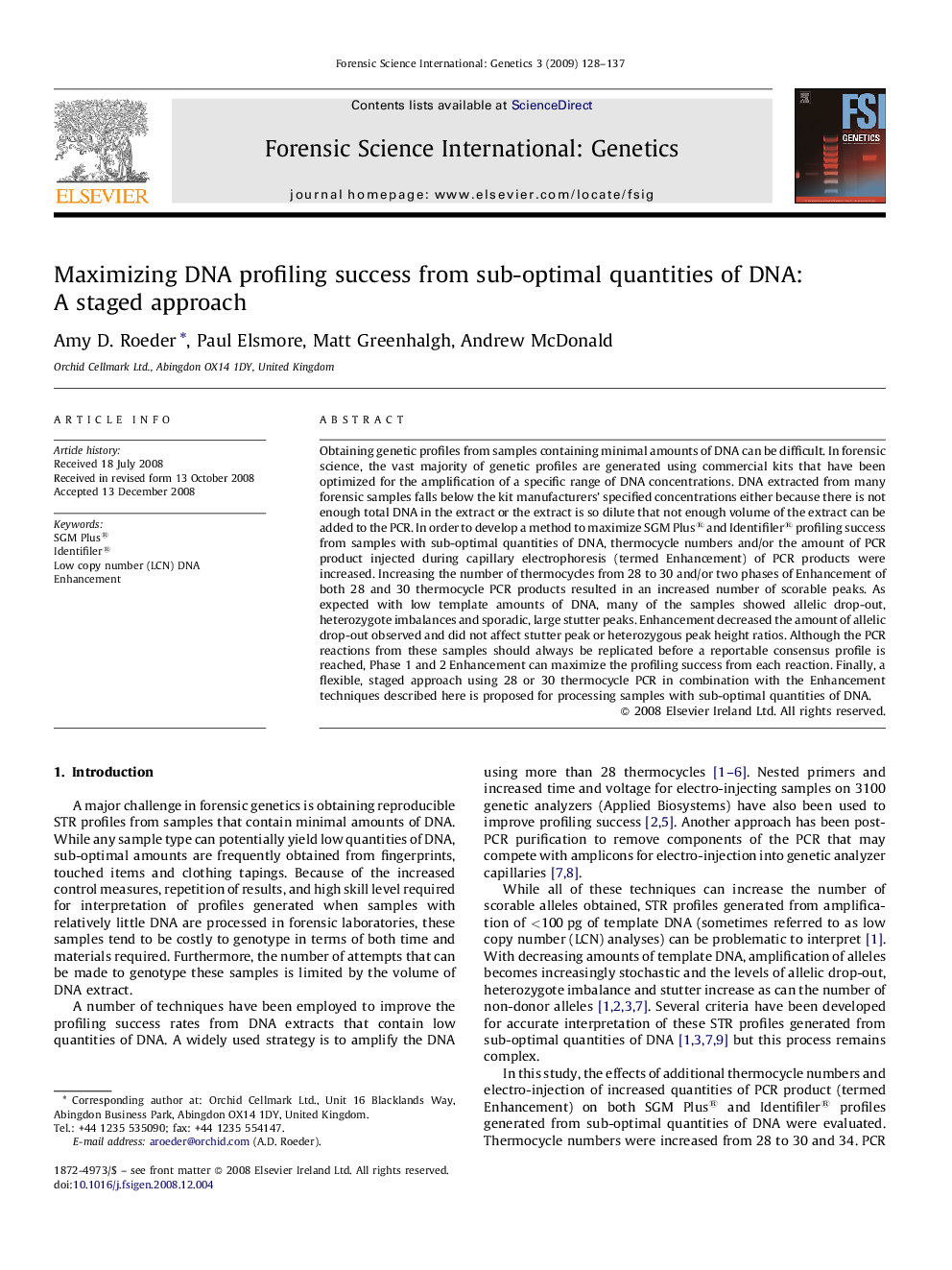| کد مقاله | کد نشریه | سال انتشار | مقاله انگلیسی | نسخه تمام متن |
|---|---|---|---|---|
| 99429 | 160947 | 2009 | 10 صفحه PDF | دانلود رایگان |

Obtaining genetic profiles from samples containing minimal amounts of DNA can be difficult. In forensic science, the vast majority of genetic profiles are generated using commercial kits that have been optimized for the amplification of a specific range of DNA concentrations. DNA extracted from many forensic samples falls below the kit manufacturers’ specified concentrations either because there is not enough total DNA in the extract or the extract is so dilute that not enough volume of the extract can be added to the PCR. In order to develop a method to maximize SGM Plus® and Identifiler® profiling success from samples with sub-optimal quantities of DNA, thermocycle numbers and/or the amount of PCR product injected during capillary electrophoresis (termed Enhancement) of PCR products were increased. Increasing the number of thermocycles from 28 to 30 and/or two phases of Enhancement of both 28 and 30 thermocycle PCR products resulted in an increased number of scorable peaks. As expected with low template amounts of DNA, many of the samples showed allelic drop-out, heterozygote imbalances and sporadic, large stutter peaks. Enhancement decreased the amount of allelic drop-out observed and did not affect stutter peak or heterozygous peak height ratios. Although the PCR reactions from these samples should always be replicated before a reportable consensus profile is reached, Phase 1 and 2 Enhancement can maximize the profiling success from each reaction. Finally, a flexible, staged approach using 28 or 30 thermocycle PCR in combination with the Enhancement techniques described here is proposed for processing samples with sub-optimal quantities of DNA.
Journal: Forensic Science International: Genetics - Volume 3, Issue 2, March 2009, Pages 128–137